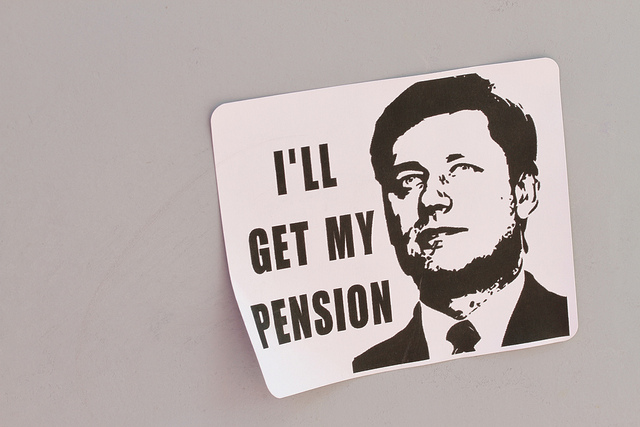Like this article? rabble is reader-supported journalism. Chip in to keep stories like these coming.
The federal finance minister and eight of his provincial counterparts have reached a deal to enhance the Canada Pension Plan (CPP).
Quebec has its own, parallel, Quebec Pension Plan (QPP), which it will also enhance; but in its own way, not in lock-step with the other nine provinces.
Manitoba has not signed on to the deal.
The Conservatives will characterize this modest plan engineered by Justin Trudeau’s finance minister Bill Morneau as a tax grab.
The Conservative solution is to cut taxes, thereby allowing Canadians to save more on their own. No need for government to get involved more than it already is, say the Conservatives.
It is well to remember, though, that by OECD standards Canada’s current CPP/QPP system is downright stingy.
American pensioners do much better
Other countries similar to Canada provide for much more generous, public, guaranteed pensions.
In the U.S. they call it social security and the maximum benefit is over $30,000 per year. The maximum CPP/QPP benefit in Canada is a bit more than $13,000 per year. Even if you add Old Age Security (OAS), which is not based on lifetime contributions, to the contributory CPP/QPP, the total is still far below U.S. social security. The maximum OAS payment is a bit under $7,000. Thus, when the two public pensions are combined, Canadian pensioners are entitled to less than two thirds of what their American counterparts get from social security.
There is also a Guaranteed Income Supplement (GIS) in Canada, of about $8,000 per year, but that is available only to the poorest and most destitute Canadians.
The OAS and GIS have served to lift seniors out of poverty. Former Senator Hugh Segal, an avid advocate for a guaranteed minimum income, argues that we should do for all Canadians what OAS and GIS have done for the elderly.
But for people of moderate incomes in Canada, the weakness of the CPP-QPP and OAS system has forced them, to a greater degree than is healthy, into the arms of the financial industry.
Fees in Canada for the professionals who manage your savings are among the highest in the world. Those professionals are, in many ways, the main beneficiaries of the third tier of Canada’s pensions system: tax-supported measures such as the Registered Retirement Savings Plan (RRSP).
Six years ago, that tier of the retirement income system cost the federal government alone about $29 billion in “lost” tax revenue. It cost billions more to the provinces as well.
We do not yet know who will benefit most from enhnced CPP
The plan hatched at Monday’s meeting does not deal holistically with the entire pension system. It focuses on a modest increase in CPP contributions, which will, ultimately result in somewhat richer and more broadly distributed benefits.
The devil is in the details, and we do not have many yet. Will the enhancement make it easier for freelancers and other self-employed Canadians to make CPP contributions? And what will be the enhanced CPP’s impact on funds directed toward the poor, such as the GIS? Quebec’s finance minister has already raised concerns about that issue.
What the finance ministers came up with is modest and moderate, but a big improvement over similar, if half-hearted, efforts during Prime Minister Harper’s time.
It is noteworthy that on the same day as Morneau brokered a CPP deal the Liberal government announced the beginnings of a process to strengthen federal environmental assessments of resource development projects such as pipelines. Harper had famously ransacked that assessment process.
With the each passing day, the Trudeau government looks better and better when compared with its predecessor.
Photo: flickr/Danielle Scott



